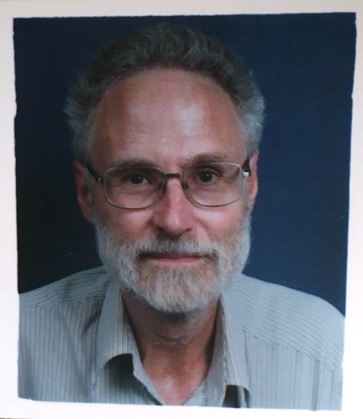Simon Robert Charsley, 1939-2017
During a conference on Indian politics in Hyderabad in 2012, I had the opportunity to interact with a group of Dalit (formerly untouchable caste) students. One of the first questions put to me was: ‘Do you know Professor Charsley?’ In an article for The Hindu Newspaper in 2002, the Indian academic Sachinananda Mohanty offers some insights into why this might be the case. ‘For nearly three decades or so’, he wrote, ‘Professor Simon Charsley … ‘has carried out commendable research. He has braved the blistering Indian summer, the monsoon rains and the attendant discomforts of a tropical climate for the sake of exciting projects. The result has been books, research papers, videos regarding the fascinating world of culture and ethnicity in India’. He goes on to paint a picture of Simon, arguing that ‘Charsley’s build and physique match his image as an ethnographer. Lean and tall with a small beard, he could easily pass off as iconic cultural traveller’. Whilst speaking to the heartfelt regard and esteem with which Simon was held by colleagues in India, there is a danger here of viewing Simon as a classic anthropologist who immersed himself in a culture for years on end, returning time and again to the scene of his fieldwork. Simon did retain close and strong links with the field, but it would be a dis-service to pigeon-hole him as a South Asianist.
Across his career, Simon responded to changing circumstances by shifting course. The result is a series of fine-grained studies the traverse multiple settings and themes. Indeed, Simon began life as an Africanist. His Master’s thesis on the Nyakusa of Tanzania impressed the examiner so favourably that he recommended that it be written up for publication. Accordingly, Simon’s first book, published in 1969, was The Princes of Nyakusa which offered a critical re-evaluation of existing anthropological accounts. Simon conducted doctoral research in Uganda, where he also worked as a researcher at Makerere University. He was awarded his PhD in 1969 by the University of Mancheter for a thesis titled Patterns of Social Organisation in an Area of Mixed Immigration in Uganda. Simon was on the brink of taking up a UNESCO role in Uganda when Idi Ami came to power, causing Simon to change focus. At this point came the first of his research visits to India and the beginning of a lengthy interest in the sub-continent. His early work focused on silk production and led to the well-received book on Culture and Seri-Culture (1982). The book was taken up by policy makers and used to develop sericulture in India. Simon was also invited by the Central Silk Board to be one of the advisors for monitoring and assessing the impact of the new policy measures.
His young family offered the next change in direction. During his children’s school years, he became an anthropologist ‘at home’, and contributed to establishing the respectability of the Anthropology of Europe and the UK. He brought his blend of rich data and detailed analysis to bear on matrimony in Scotland with the publication of two books. First came Rites of Marrying: The Wedding Industry in Scotland (1991) which won the Katharine Briggs folklore award. A minor aspect of this work was subsequently developed into Wedding Cakes and Cultural History (1992) which analysed the role of the wedding cake as a symbolic element of wedding rituals. Finally, Simon returned to India and devoted himself to studying the changing nature of caste with a particular focus on Dalits – those at the foot of the caste hierarchy. Several important articles and two significant edited volumes – Challenging Untouchability (with Gopal Karanth, 1998), and Performers and Their Arts (with Laxmi Narayan Kadekar, 2006) – brought together leading scholars to offer fresh insights into caste and culture today. With Professor G. K. Karanth he also edited a 5 volume series of books on Cultural Subordination and the Dalit Challenge. As a contributor to that series I was exposed to Simon’s insightful critiques and enduring encouragement and enthusiasm.
Simon Charsley, in other words, was a social anthropologist par excellence. His contribution to the understanding of social customs and change is significant, but it is important also to emphasise his commitment to reaching out beyond the ivory tower. Even with his first book on the Nyakusa, we see a feature that was to become a hallmark of Simon’s research: an emphasis on sharing the knowledge and engaging in what we might – following Burawoy – term ‘public anthropology’. As Alison Redmayne notes in her positive review of his book: ‘Although the main purpose of this book is to re-examine the Wilsons’ data on Nyakyusa indigenous political organisation, it should be valuable to many non-anthropologists who are not concerned with the main argument. This is because Mr. Charsley has now made available much historical information about particular events in Unyakusa during the late nineteenth century which before was buried in German Moravian and Scottish mission archives’. This concern to disseminate data and share research is also seen in the Seri-culture project as mentioned above. Not content with publishing well-received analyses of caste, Simon was dedicated to supporting others to carry out research and devoted time and energy to compiling an excellent and detailed web-page with key summaries of his work, annotated bibliographies and a wealth of other resources. He was an appreciative, supportive and encouraging mentor and colleague, which best explains the curiosity of the Dalit students in Hyderabad.
Simon was employed in the Sociology Department at the University of Glasgow, but championed the teaching of Social Anthropology and the development of a cluster anthropologists there. His courses gave many students an introduction to anthropology. Andrew Smith, current head of Sociology, recalls that the classes – which he attended as an undergraduate – ‘were exceptionally engaging, and wonderfully well-structured. He took us through the history of anthropology as a discipline in a way that made the ebb and flow of intellectual development really vivid and meaningful. It was the kind of synoptic overview of an entire discipline which I think very lecturers do (or could) attempt any more. Above all, though, he communicated something more normative or ethical: a heartfelt, compassionate curiosity about human beings and their social lives. It really switched me (and, I’m sure, other students) on to the value of an ethnographic method.’
In sum, he was an outstanding teacher, a prolific author, an enthusiastic traveller and popular collaborator (working closely with colleagues and students in India). He was a mainstay of the Sociology department in Glasgow until his retirement in 2005. In addition, he held affiliations with the Institute for Social and Economic Change (Bengaluru) and Department of Sociology in Central University, Hyderabad. Dr Simon Robert Charsley died on 13th December 2017 aged 78. He is survived by his wife Jean, son PJ and daughter Katharine, who has followed in her father’s footsteps as an anthropologist. He will be remembered as an insightful, rich and dedicated promoter of cultural anthropology. Generous and public-spirited, he earned a special place in the heart of those he worked with. His twinkling smile, constant enthusiasm and never failing optimism will be sorely missed.

HUGO GORRINGE
University of Edinburgh
To cite this article:
GORRINGE, HUGO. 2018. ‘Simon Robert Charsley, 1943-2017’. Obituaries. Royal Anthropological Institute, 2018. (available on-line: http://www.therai.org.uk/archives-and-manuscripts/obituaries/simon-robert-charsley).
Link to relevant records by or concerning the listed person on the RAI’s bibliographic database Anthropological Index Online https://aio.therai.org.uk/aio.php?action=doquicksearch&qs_resultsmode=fullkeywords&qs_decades=all&qs_keyword=Simon%20Charsley
